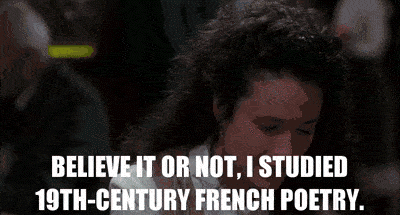According to press reports, Donald Trump’s “education week” begins next Monday (August 29th) – timed to coincide with ‘back-to-school’ happenings. He’s expected to push traditional Republican fare like private school vouchers, anti-Common Core standards rhetoric, and a general beating up of teachers and their unions (e.g. tenure, collective bargaining, etc., etc.). Unfortunately, some good ideas like the replication of high-quality public charter schools may get smeared with Trump’s endorsement. (“If Trump is for them, they must be bad.”)
But there’s also a potential wild card policy proposal that will be included in Trump’s forthcoming remarks on education—a specific, out-of-the-box and highly debatable policy proposal. Cue Sam Clovis, the Republican nominee’s campaign co-chairman and national policy director. Clovis is a tenured economics professor at Morningside College, a small private non-profit school in Iowa. He has strong views on higher education and has floated a number of Trump trial balloons in the education trade press. He has said the Trump campaign plans for higher education to be a major domestic issue of distinction in the general election race.
In a news scoop interview, Inside Higher Ed’s Scott Jaschik reports on Clovis describing the outlines of a higher education plan that as of publication Trump was preparing to put forth. There are multiple elements, but the heart of the plan involves an overhaul of the federal student loan program and college and student actions that would spring from it.
First, Trump presumably would return to a system structure akin to the old Sallie Mae-dominated Federal Family Education Loan (FFEL) program, where banks inspired by generous taxpayer subsidies made loans to students. That’s not so out of the box. It would cost billions, though. The Congressional Budget Office estimated the Obama-driven move from FFEL to our current Direct Loan system saved taxpayers approximately $61 billion. A shift back would require somewhere near that amount in increased taxpayer spending on bank subsidies or offset reductions in student aid (e.g. Pell Grants).
Second, risk sharing. According to Clovis, colleges should have “skin in the game,” which is financial exposure for student loan default or other non-repayment costs associated with unsuccessful students. In fact, Inside Higher Ed reports that Clovis said risk sharing exposure should be “substantial enough to change the ways colleges decide whether to admit students and which programs to offer.”
Third (and “revolutionary” according to Clovis), would be to have colleges play a role in determining borrower creditworthiness and cost based on area of study, expected earnings, and presumably past academic performance.
Wow. In other words, it would be more expensive–in many cases, prohibitively so–for middle class and low-income students to study liberal arts at non-super elite colleges. If you’re from a well-to-do family, you can study whatever you want wherever you’re admitted. But if you’re poor or middle class, unless you’re going to the likes of Harvard, you’ll be channeled into a more practical field of study or shut out of school.
It’s hardly comforting though that less financially advantaged kids at super-elite colleges will still be able to major in subjects like folklore. These schools are notoriously not economically diverse. How not economically diverse are we talking? You’re 25 times more likely to bump into a rich kid than a poor one on the campus of America’s 146 top universities.
In other words, unless you’re lucky enough to be able to pay for college without student loans, you’re either studying what someone else thinks you should study or “you’re on your own.”
Hillary Clinton’s college access and affordability plan is the opposite. (Disclosure: we played a role in its development.) There are no content-based restrictions on curriculum. In keeping with her “stronger, together” theme, she’d make public colleges tuition-free for families with incomes reaching up to $125,000 a year and debt-free beyond that, irrespective of a student’s course of study. She’d incentivize states to stop their practice of privatizing public higher education through budget cuts. And she’d tax the super wealthy to pay for it all.
Now we think “stronger, together” is a better game plan for the country than “you’re on your own.” Either way, the Democratic and Republican presidential nominees are further defining a clear ideological contrast for voters. May the best plan win.

